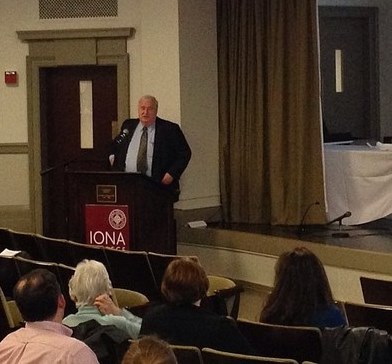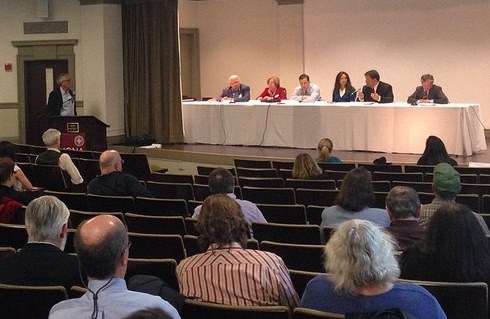Over 90 participants spent a productive day discussing how to preserve Long Island Sound into the future
The 23rd Annual Long Island Sound Citizens Summit, held April 25th at Iona College in New Rochelle, NY, focused on how past lessons of Long Island Sound can help protect it into the future. Over the last 20 years, management of the Sound has followed a Comprehensive Conservation and Management Plan (CCMP).

For the 20th anniversary of the CCMP, this year’s Citizens Summit focused on revising the plan with a vision for the next two decades of a healthy Long Island Sound. Participants were asked to imagine the Sound in 2034 and then identify ways to get us there.
The day began with a presentation by Wesleyan professor Johan Varekamp on Adriaen Block, an early explorer of Long Island Sound. In the keynote presentation, Albert Appleton, former commissioner of the New York Department of Environmental Conservation, talked about how a sustainable future for Long Island Sound requires the support of deeply involved citizens.
Four afternoon breakout sessions examined the themes of the revised CCMP, summarized below. After the groups reported back to the entire Summit, a government action panel addressed how to put the ideas into action.
Sound Communities wanted to develop a communication plan to educate the public about climate change impacts and adaptation strategies. Other short-term goals included supporting communities in protecting coastal infrastructure and natural shoreline landscapes like dunes. They also want more and better public access sites to the Sound by 2030, including a multi-state trail highlighting aspects of the Sound like beaches and fishing spots. Long-term goals include conducting a survey every five years to understand how the public perceives the Sound’s health.
Short-term goals for Waters and Watersheds emphasized continued upgrades for sewage treatment plants to stop the dumping of nitrogen pollution that creates a dead zone each summer that suffocates fish. This breakout group wants strong recognition of Long Island Sound as an economic asset supporting prosperity throughout the region and beyond.
The main short-term priority from the Habitats and Wildlife session was designing and promoting combined habitat restoration and monitoring projects with meaningful citizen engagement and participation, especially in urban areas. They’d also like to focus on restoration projects that reconnect rivers for fish species that spend time in the Sound and upstream. An important long-term concern was sharing data through public portals and multimedia technologies.

Science and Management looked at how more accurate data can help efforts to restore Long Island Sound. Short-term goals included setting priorities for upcoming research needs and encouraging Congressional involvement from both New York and Connecticut. Long-term goals included ensuring that upstream areas that drain to Long Island Sound are healthy, which protects the Sound’s water quality.
Did you miss any of the action? Check out our Storify, which compiles all of the best social media conversation around the Citizens Summit.
Want to read more about this year’s Summit? Check out three guest blog posts: an introduction by Drew Carey of WaterVision, a post on the history of the Summit by David Miller of Listen to the Sound, and a post on birds and wildlife of Long Island Sound by Sandy Breslin of Audubon. We hope to see you next year at the 24th Annual Long Island Sound Citizens Summit!

1 thought on “Long Island Sound Citizens Summit a Success!”
Comments are closed.